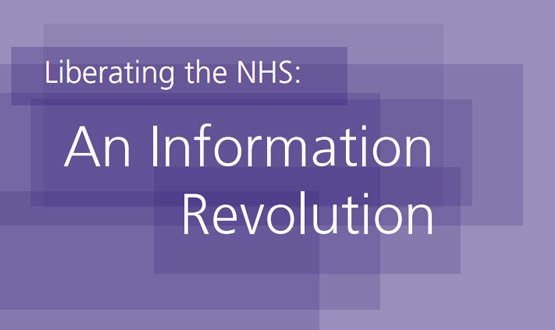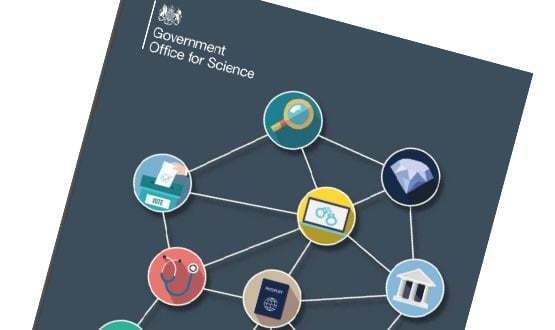Making patient control the goal
- 23 November 2010

This week it became clear that the government means what is says in its information consultation. It not only plans to give patients access to their records but also to hand over control.
Many clinicians will recoil at such a move, or at the very least want much more detail on how it might work.
But the reaction of patients is surely the key to the plan’s success or failure. Is control of records what patients need or want and if there is an appetite for such control from the public, how will it be delivered?
Not through HealthSpace, according to Professor Trish Greenhalgh, who last week published some fairly damning research on the project. It showed that patients found the Department of Health’s online health portal neither useful nor easy to use.
HealthSpace fails to make the pace
Enthusiasm for the service was so low that just 0.13% of those invited had opened an advanced HealthSpace account which would allow them access to their Summary Care Record.
Professor Greenhalgh argues that technology is not the issue in the debate about whether personal health record systems can work. “We need to look at how people are managing their chronic illnesses, at the social systems and the processes around that,” she says.
The information strategy consultation document, ‘Liberating the NHS: An Information revolution’, significantly makes no mention of HealthSpace or the idea of a personal health record portal, although the DH did appear to back HealthSpace in the face of Professor Greenhalgh’s research last week.
Market now expected to deliver
What the strategy does say is that as patients and service users are given control of their records, “the market will develop new products to bring together the information they need in a form they expect, to help them manage their own health and wellbeing.”
After rejecting the £98m business case for HealthSpace two years ago it is unlikely the government will be any keener to invest huge sums of money in record access now. If it did so it is also likely to face opposition from some groups such as the BMA.
BMA says patient control not a core priority
Dr Chaand Nagpaul, deputy chair of the BMA’s GP committee and its lead on IT issues, says he would like to ensure the Department of Health learns the lessons from HealthSpace.
He says: “We are facing unprecedented levels of cuts in funding and I think the government has a lot on its plate to get its core IT responsibilities right so I think these are aspirations that are not a priority.”
The information strategy document says the extent to which patients will have ‘control’ of their record will vary according to circumstances and the nature of the record and its contents.
The DH says it plans to kick off with access, starting with GP records, which it suggests could be available for patients to pass on “in standard format” to any organisation of their choice.
Patients data donations
Possible recipients are named as people with similar conditions, support groups, charities and researchers. The document acknowledges that its proposals will happen “over time” and that “a phased approach will be adopted”.
Certainly there has been little enthusiasm from health professionals for such technology to date. GP computer supplier EMIS covers almost 60% of the population and its functionality EMIS Access has enabled practices to offer record access for a couple of years.
However, it seems likely that very few practices have promoted it and just 14,000 patients have accessed it – compared to 1.8m prescriptions ordered online in the last ten months using the same functionality and 878,386 appointments booked and 243,454 cancelled through the service.
Challenge on records access not about technology
Like Professor Greenhalgh, Sean Riddell, chief executive of EMIS, argues that the challenge on records access is not the technology. He says the NHS will need to look change management, support and education and need to deliver information governance systems that keep information secure without being too difficult for patients.
Riddell argues that those many thousands of patients requesting prescriptions online are already seeing their medication record and he believes that in future other subsets of the record such as information on diabetes or chronic obstructive pulmonary disease could be similarly accessed and used in a routine manner.
Patients want transactional services
Riddell says the number of practices using EMIS Access, now up to 1,949 practices and growing every month, are an indication that practices do see the time and money saving benefits for both practices and patients in using transactional services if not on record access.
“Patients and practices understand that this is a positive benefit and not something to be apprehensive about,” he says.
While take up on record access has been poor in many areas one or two practices such as Haughton Thornley Medical Centres in Cheshire are promoting record access at every opportunity.
Access clear, control confused
However, even partner Dr Amir Hannan, who now has 877 patients accessing their records, confesses he is struggling to understand what ‘control’ means and how it could work.
He says: ‘ Patients don’t come in to me and say they want control of their records. They come to me when they think there’s something wrong with them or they are worried about something and want to know what they can do about it.”
It is at this point that Dr Hannan says he always advocates record access because he believes the information in the record, such as health data and advice given my clinicians, can empower the patient to take responsibility for their own health.
Patient access part of wider discussion with clinicians
While he says control should be a “subject for debate and discussion” he says that as well as record access patients should have access to information on care pathways, Patient Reported Outcome Measures, patient experience reports and decision aids.
He adds: “To my mind those are the five factors that when brought together can help patients and clinicians to achieve the best outcomes.”
Collaborative effort required
When discussing these five factors it is clear that what Dr Hannan would like to see entails a collaborative effort from a variety of sources. Record access delivered by a GP supplier through an NHS service, Map of Medicine and PROMS from the public sector and resources such as HealthTalk from a charitable organisation.
Greenhalgh argues that the government needs to drop its centralist, government-know-best mentality if it is to harness technology to the ultimate benefit of patient care.
Start simple, stay focused
Professor Greenhalgh suggests that starting with a much lower-tech approach to self-care might work, such as encouraging patients to record their blood sugar readings on an Excel spreadsheet and then emailing that to their doctor or nurse before their clinic appointment.
The grand plan may need to begin with small steps.




